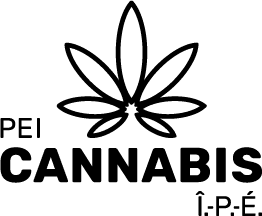Cannabis Consumption Methods
The two main methods of cannabis consumption are: inhaling and ingesting.
Inhalation involves the combustion (burning) or vapourization of dry, ground cannabis flowers. Combustion could involve rolling the dried flower in paper and lighting it with a flame or putting it in a pipe or water pipe (sometimes called a “bong”), which cools the smoke before it is inhaled. Another way to inhale cannabis is to put it in a vapourizer or “vape”– an electronic device that heats the cannabis to an ideal temperature for the release of its active compounds in a vapour.
Inhalation delivers cannabis to your body via the lungs and therefore quickly to the bloodstream, and so an effect will be felt quickly – one inhalation may be all it takes to feel the effects. For this reason, you should wait 5 to 15 minutes after a single inhalation to gauge its full effect.
As always, start low and go slow!
Ingestion involves eating or drinking cannabis via oral tinctures, capsules, oils or edible products. When you ingest cannabis, the active compounds enter through your digestive system and are carried via the bloodstream through to your central nervous system and your brain. Because it takes longer to enter the bloodstream via this method of consumption, the effect takes longer to experience than it does from inhalation. This can lead to consuming more cannabis than intended. The effects from ingestion can also last longer than with inhalation.
If you’re new to ingesting cannabis, always START LOW AND GO SLOW and wait at least an hour to determine your body’s response.
Topical Application cannabis products are mostly used for medical purposes. They are rarely psychoactive. Even so, it’s wise to apply a small amount on your skin to start.
Other consumption methods include:
Juicing – Fresh cannabis flowers can be used to make a juice. You would still ingest the plant’s cannabinoids, vitamins and minerals in this method. However, because the cannabis has not been heated in the process of making the juice, the compounds will not be activated or produce any intoxicating effect.
Nasal spray – This method delivers a standardized dosage of THC or CBD directly to the bloodstream.
Tinctures and lozenges – More research into these methods is required.
Suppositories – These may be used medically for specific conditions. More research is required.
Shatter and “dabs” – This refers to concentrated cannabis oil that delivers very high doses of THC through inhalation. Risks of this method include toxic psychosis, orthostatic hypotension and acute impairment.
Tips for consuming cannabis responsibly:
- Start low and go slow! Start with very small amounts, especially if you’re new to cannabis.
- Always consider THC and CBD content in products. New users should opt for mild THC levels or choose products with higher CBD levels to counter some of the effects of THC.
- Try lower-risk alternatives to combustion inhalation like vaping or ingesting oils.
For more information on how to reduce risk associated with cannabis use, visit CAMH.ca for Lower Risk Cannabis Use Guidelines.

